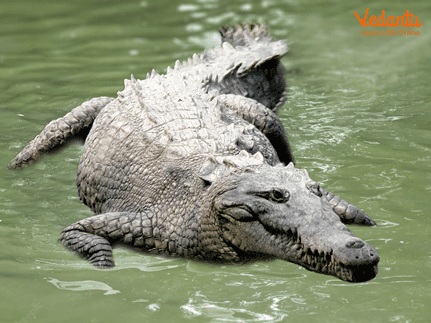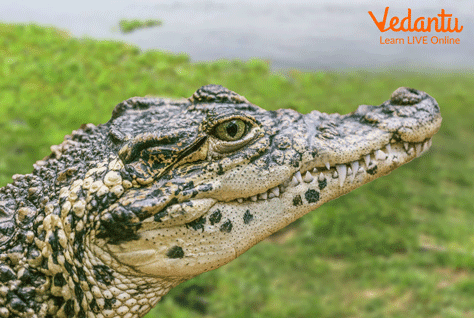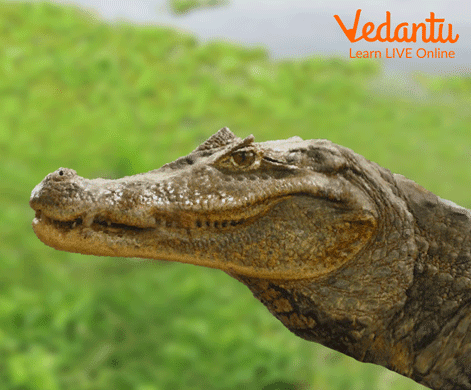How to Identify Alligators and Crocodiles: Easy Comparison Chart
Do you know, that alligators first appeared on the planet 37 million years ago? It not only makes them old but also turns them into living dinosaurs. Today, nearly 1.3 million of these living dinosaurs live in Florida.
Also, dinosaurs roamed freely alongside crocodiles. In fact, crocodiles are thought to be one of the only animals to have survived the asteroid that wiped out the dinosaurs. They survived the mass extinction and continued to thrive for hundreds of millions of years.
Alligators and crocodiles look similar but they are different species of the reptile class. Let’s dive deep into their world and know the similarities and differences they share with each other in this article.
Alligator
Alligators have a long, rounded snout with upward-facing nostrils at the end, which allows them to breathe while the rest of their body is submerged. The young have bright yellow stripes on their tails, while adults have dark stripes. The teeth easily distinguish an alligator from a crocodile.
Alligators have a small body length, approximately 14-15 feet. A female alligator is a little bit smaller than a male, who may weigh up to 1200 pounds. Chinese alligators (Alligator sinensis) are 4.9 feet long, whereas American alligators (Alligator mississippiensis) range in length from 9.8 to 15 feet. They are generally found in the United States and the Caribbean.
Crocodile
Crocodiles have strong jaws with numerous conical teeth, as well as short legs with clawed webbed toes. They have a distinct body shape that allows the eyes, ears, and nostrils to be visible above the water's surface while the rest of the animal is hidden beneath. The tail is long and massive, with thick, plated skin.
Talking about the alligator vs crocodile size, crocodiles are long and lengthy as compared to alligators. The body size of crocodiles is about 17-18 feet. Male crocodile species Crocodylus porosus grow to a height of 6-7 metres, while females grow to a height of 3-4 metres. Males and females of the species Crocodylus johnstoni range in height from 1.5 to 3 metres. Crocodiles are located in Africa, South East Asia and some parts of Central America.
Alligator vs Crocodile
Image of Alligator and Crocodile
American crocodile (Crocodylus acutus), Nile crocodile (Crocodylus niloticus), saltwater crocodile (Crocodylus porosus), and Indian crocodile (Crocodylus palustris) are a few species of crocodile.

American Crocodile (Crocodylus Acutus)

Chinese Alligators (Alligator Sinensis)

Common Caiman (Spectacled Caiman)
Conclusion
The alligators and crocodiles are from the same class of reptiles but differ a little in characteristics such as body shape structures and habitat. Crocodiles are bigger than alligators. The above article explains the difference between alligators and crocodiles which is helpful with respect to class 11. Alligators and crocodiles are almost similar to each other but this article mentions the differences that help to distinguish these two species.


FAQs on Alligator vs Crocodile: What Sets Them Apart?
1. Difference between caiman and crocodile.
Caimans are found in South America. Animals classed as Crocodilia include alligators, caimans and gavials. The caiman has a high ridge rostral to the eyes, which is the primary physical distinction between it and the alligator. There are five different caiman species on the planet, including the common and black caiman. Caimans are like alligators and we have discussed the differences between alligators and crocodiles.
2. What is temperature-dependent sex determination in alligators/caimans?
Crocodilian embryos lack sex chromosomes, and sex is not determined genetically, unlike in humans. Temperature influences sex in them. The up and down temperature influences the sex of alligators and caimans. The temperature is low during winter and colder at the depth of the water, while the upper surface of the water has a high temperature because sunlight cannot reach depth.
Males are produced at low temperatures, whereas females are produced at high temperatures. Males exceed females at intermediate temperatures, although both sexes are created in that zone.
3. How do crocodiles do thermoregulation?
In terms of the body, homeostasis is the maintenance of a consistent internal environment and the normal range of a certain variable. Crocodiles are ectothermic vertebrates, which means they have cold blood. Their bodily environment changes depending on their surroundings. They rely on the sun to heat them and the water to cool them. If the crocodile detects a temperature shift, it must migrate to the water or bask in the sun to regulate its body temperature. Saltwater crocodiles can achieve body temperature homeostasis, but they employ different effectors than humans as they have no thermoregulation like humans.










